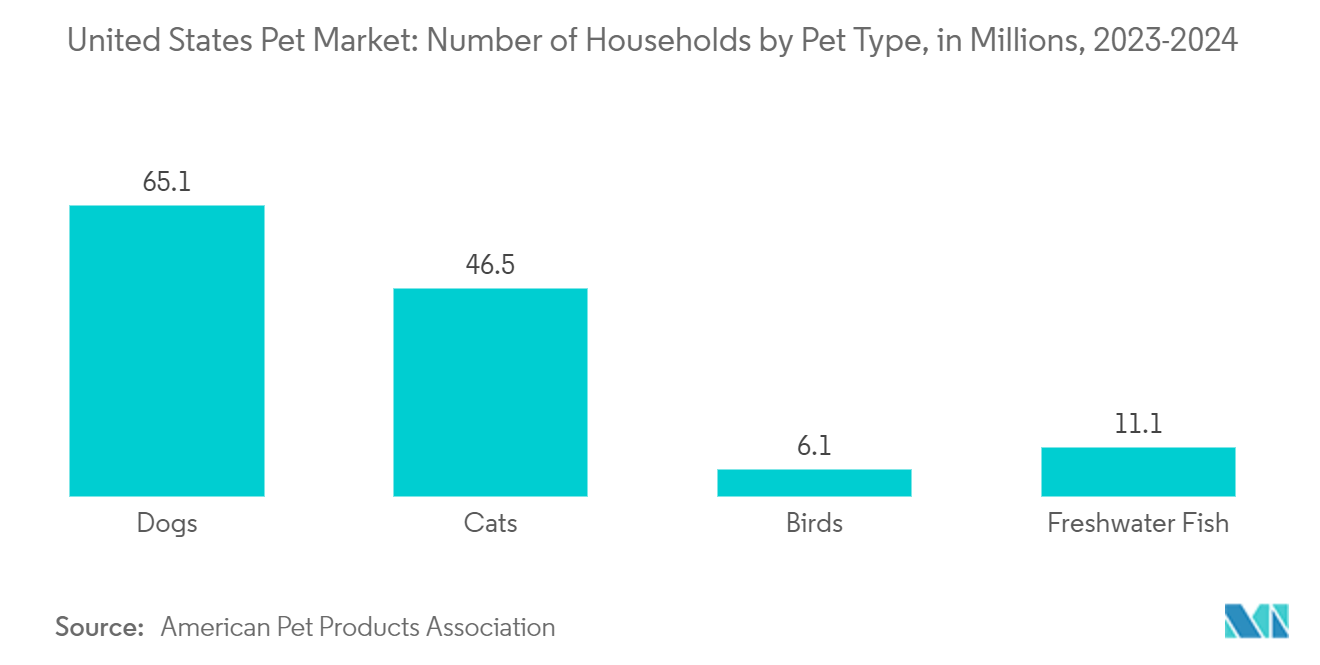Market Trends of United States Pet Industry
Dogs are the Major Pets in the United States
Dogs as pets had a higher share in the United States in 2022 due to the high demand for companionship, as people felt more secure with dogs and dogs' inherent ability to adapt to their owner's routines. In 2022, around 65.1 million households owned a dog, which accounted for 74.9% of the households owning a pet. In 2021, 85% of dog owners considered dogs their family members. There were more pet owners in the rural areas of the United States, with 19% more than in urban areas in 2017. The states of Wyoming, West Virginia, and Indiana have the highest population of dogs.
The animal shelter is one of the key channels for dog adoption, and a rise in the purchase of dogs from pet stores is expected during the forecast period due to an increase in income levels and the high demand for dogs as companions in big apartments. In 2020, 38% of dog parents adopted dogs from an animal shelter, while 42% purchased them from a pet store. The demand for pet grooming, pet boarding, and dog walking services is high, as pet parents treat their pets as family members. For instance, Pet Backer in the United States helps pet parents care for their pets while away and provides grooming services.
The growing trend of pet humanization and the evolving pet ecosystem are anticipated to help increase the pet population in the country, which, in turn, is expected to increase the demand for pet food during the forecast period.

Online Channel is Emerging as the Major Distribution Channel
Millennials, who now constitute most pet owners, work long hours. This drives the demand for convenience, such as online retail channels, in purchasing pet products and services they use. The internet is well suited for selling info-centric health-related products, including natural and organic products. The largest specialty store chains such as Petsmart.com and PetCo.com, PetFlow.com, PetFoodDirect.com, PetFoodExpress.com, and PetSupermarket.com have their e-commerce websites which captured significant share in online pet supplies distribution owing to their convenience. Additionally, discounts, rewards, and auto-ship options on online channels have made millennials and Gen Z pet owners choose e-commerce for pet food purchases along with their regular grocery requirements.
Many smaller marketers and retailers turn to e-commerce as a sales medium to increase their consumer range and demand. For instance, several pet food innovation startups such as Bond Pet Foods, Wild Earth, Smalls, Sundays for Dogs, and Hungry Bark have websites to serve online and deliver their services to consumers. Moreover, online marketplaces serve as a means for understanding consumers' personalized choices and help cater to specific needs. Many business models have come into existence using online channels to serve customized choices. For instance, Smalls is a cat food supplier that delivers cat foods based on the pet owner's choice of ingredients. PetPlate is also a pet food supplier that cooks pet food at home based on consumer choice and delivers it to doorsteps with their subscription model.


